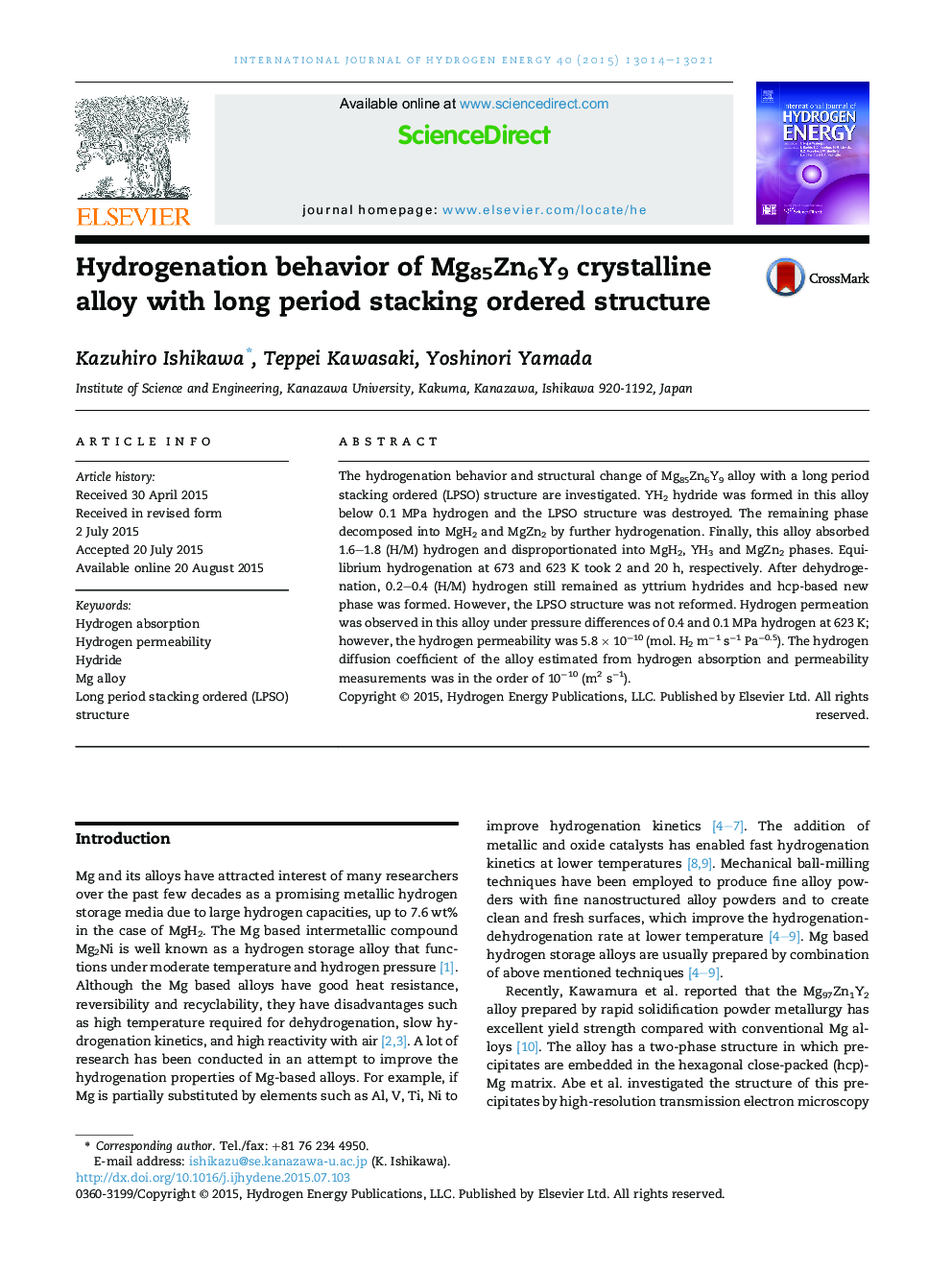| Article ID | Journal | Published Year | Pages | File Type |
|---|---|---|---|---|
| 1269217 | International Journal of Hydrogen Energy | 2015 | 8 Pages |
•Structural change of the LPSO Mg–Zn–Y alloy due to hydrogenation is investigated.•The LPSO structure is destroyed by hydrogenation and not reformed by dehydrogenation.•LPSO Mg–Zn–Y alloy decomposes into yttrium hydride and hcp-(Mg, Zn) phase.•The hcp phase disproportionates to MgH2 and MgZn2 absorbing 5 wt% hydrogen.•Hydrogen permeability of the LPSO alloy is low because of low hydrogen diffusivity.
The hydrogenation behavior and structural change of Mg85Zn6Y9 alloy with a long period stacking ordered (LPSO) structure are investigated. YH2 hydride was formed in this alloy below 0.1 MPa hydrogen and the LPSO structure was destroyed. The remaining phase decomposed into MgH2 and MgZn2 by further hydrogenation. Finally, this alloy absorbed 1.6–1.8 (H/M) hydrogen and disproportionated into MgH2, YH3 and MgZn2 phases. Equilibrium hydrogenation at 673 and 623 K took 2 and 20 h, respectively. After dehydrogenation, 0.2–0.4 (H/M) hydrogen still remained as yttrium hydrides and hcp-based new phase was formed. However, the LPSO structure was not reformed. Hydrogen permeation was observed in this alloy under pressure differences of 0.4 and 0.1 MPa hydrogen at 623 K; however, the hydrogen permeability was 5.8 × 10−10 (mol. H2 m−1 s−1 Pa−0.5). The hydrogen diffusion coefficient of the alloy estimated from hydrogen absorption and permeability measurements was in the order of 10−10 (m2 s−1).
